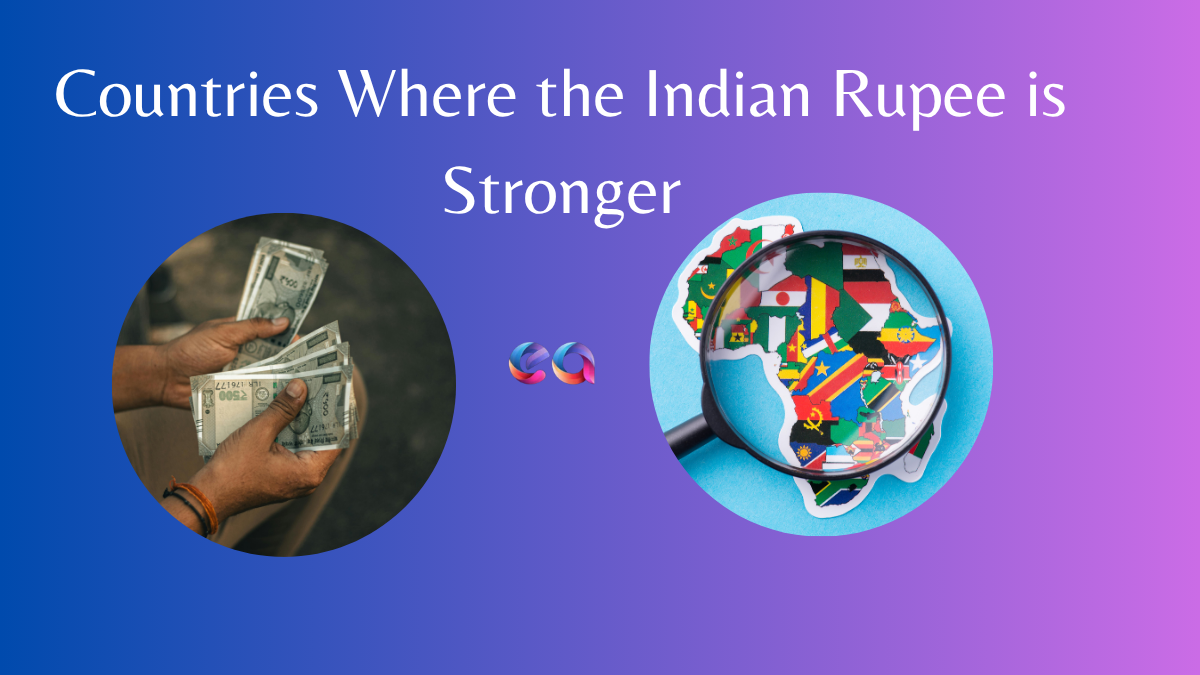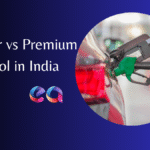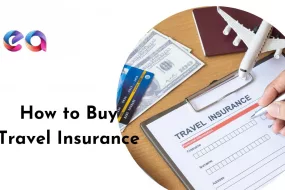
For decades, the standard narrative of international travel for an Indian citizen has revolved around budgeting, saving, and carefully converting Rupees into dominant currencies like the US Dollar, Euro, or Pound. This framework often placed a ceiling on the depth, duration, and even the destinations available for exploration. However, a significant shift in the global economic landscape is rewriting this script.
The Indian Rupee , driven by the nation’s consistent economic growth and increasingly sophisticated financial management, has achieved a noteworthy position against the currencies of several fascinating, culturally rich, and geographically diverse countries. This is not merely about a favorable exchange rate; it’s about a fundamental transformation in purchasing power that elevates the travel experience from a tightly budgeted vacation to an adventure of affordable luxury and unbridled exploration.
This comprehensive guide is engineered to be the definitive resource for the modern Indian traveller. We will move beyond simple country lists to deeply analyze the economic, logistical, and experiential advantages of visiting countries where your hard-earned Rupee buys more. Our goal is to empower you to plan trips where every one rupee is not just a unit of currency, but a key to unlocking richer, longer, and more fulfilling global journeys.
Table of Contents
Decoding the Economic Reality—It’s More Than Just a Rate
To genuinely understand the travel advantage, one must look past the daily exchange rate ticker and grasp the core economic principles at play. A strong Rupee in certain countries is typically a consequence of two primary, non-mutually exclusive factors: Nominal Exchange Rate Parity and Purchasing Power Parity (PPP).
The Nuance of Currency Valuation: Why is the Rupee Stronger?
It might seem counterintuitive that the INR, which is weaker against the $ or the EUR, is substantially stronger against currencies like the Vietnamese Dong or the Indonesian Rupiah. The reasons are multifaceted and rooted in macroeconomic stability, trade balances, and central bank policies.
1. Low Nominal Value and High Denomination
In many of the featured countries, a weak local currency against the global reserve currencies ($) is simply a historical or structural artifact of their monetary policy and economic scale.
- Example (Indonesia & Vietnam): Currencies like the IDRand VND have a high denomination, meaning the unit value is low. When you convert INR to IDR, you are not getting IDAR that is $200$ times more valuable than the INR; you are getting $200$ units of a currency where the individual unit has a very small nominal value. This “feels” rich because you’re handling large notes (e.g., millions of Dong), even if the true purchasing power for internationally traded goods remains balanced.
2. The Power of Purchasing Power Parity (PPP)
This is the most critical factor for the budget-conscious traveler. PPP theory suggests that in the long run, exchange rates should adjust so that a standard basket of goods and services costs the same in every country.
- The Balassa–Samuelson Effect: Many of the countries where the INR(₹) is strong are developing nations with lower overall productivity, particularly in the non-tradable sector (services like haircuts, local transportation, domestically grown food, and labor costs). Because local wages are lower, the cost of these labor-intensive services is significantly cheaper than in India, even after the exchange rate conversion.
- The Result: Your Rupee, while it converts to more local currency units (nominal strength), also benefits from significantly lower actual prices for day-to-day items (real-world strength). This synergy allows Indian travellers to enjoy an incredibly high standard of living, afford private transport, dine out daily, and book mid-range accommodation for a fraction of the cost back home.
3. High Dollarisation (Cambodia)
In some nations, like Cambodia, the local currency (Cambodian Riel, KHR) is weak because the economy is heavily “dollarized”—meaning the US Dollar is widely accepted and often preferred for large transactions. This lack of faith in the Riel keeps its value low, and while many services are priced in USD, a favorable exchange rate for the KHR can still provide niche savings for local, small-scale purchases.
Destinations of Affordability—The Rupee-Powered Travel List
The destinations where the Rupee thrives are a mix of Southeast Asian gems, Silk Road wonders, and hidden South American paradises. They offer an exceptional blend of affordability, culture, and natural beauty.
2.1. The Southeast Asian Trifecta: Luxury on a Budget
Southeast Asia consistently tops the list due to the massive exchange rate multiplier and low local costs.
🇻🇳 Vietnam: The Backpacking Dream Turned Affordable Luxury
- Exchange Advantage: INR(₹) \approx 290-305 VND
- The Experience: Vietnam is the poster child for INR(₹) value. The Rupee stretches so far that a traveller can elevate their experience without inflating their budget. Instead of a shared dorm, you can comfortably afford a private boutique hotel room in Hanoi or Ho Chi Minh City for ₹1,500–₹2,000 per night. Street food, an absolute culinary highlight, costs as little as ₹70 for a bowl of Phở or a Bánh mì.
- Expert Insight (The Transport Hack): Skip the crowded buses. With the strong $\text{INR}$, you can often use local ride-hailing apps (like Grab) to book a private motorbike taxi for trips that cost less than ₹100, saving time and greatly increasing convenience. A three-day, two-night cruise through Ha Long Bay, which is often a splurge, becomes a mid-range expense, offering exceptional value compared to similar experiences in Europe.
🇮🇩 Indonesia (Bali): Tropical Paradise for Less
- Exchange Advantage: INR(₹) \approx 185-200 IDR
- The Experience: While Bali has international prices in its hyper-touristy hubs, the INR(₹) grants access to affordable luxury services. High-quality spa treatments or an hour-long traditional Balinese massage can start at ₹300–₹500. A daily budget of ₹3,000–₹4,000 allows for high-quality stays (villas with private pools are accessible) and dining at excellent local warungs and mid-range restaurants.
- Expert Insight (Beyond the Beach): Venture beyond Bali to places like Yogyakarta (Java) or the Gili Islands. Here, the prices for accommodation and meals drop dramatically, maximizing the Rupee’s purchasing power even further while providing deeper cultural immersion.
🇱🇦 Laos & 🇰🇭 Cambodia: The Hidden Gems
- Laos Advantage: ₹1 INR approx 230-250 LAK. Laos is peaceful, scenic, and significantly cheaper than its Thai neighbor. A beautiful guesthouse in Luang Prabang costs around ₹700–₹1,000.
- Cambodia Advantage: ₹1 INR approx 45-50 KHR While many large tickets (like the Angkor Wat are USD-denominated, daily food and local transport (tuk-tuks) are cheap. A full local meal in Siem Reap can be under ₹200.
2.2. The Himalayan and Subcontinental Advantage
Proximity and historical economic ties make these destinations particularly easy and affordable for Indian travellers.
🇳🇵 Nepal: Seamless Travel and High-Altitude Value
- Exchange Advantage: ₹1 INR approx 1.60 NPR
- The Experience: Nepal is unique because of the ease of transaction—the INR(₹) is widely accepted, especially ₹100 and smaller notes, eliminating the need for frequent currency conversion. This 60% bonus in value means that the world-class trekking infrastructure, including teahouse stays and porter/guide services, becomes highly affordable. The cultural exploration of Kathmandu and Pokhara is also budget-friendly, making it one of the most accessible international destinations.
- The Safety Net: The fixed peg between the INR and NPR provides immense financial stability for the traveler, eliminating the risk of sudden currency fluctuations.
🇱🇰 Sri Lanka: Island Serendipity
- Exchange Advantage: ₹1 INR approx 3.50-4.00 LKR (Highly variable due to recent economic volatility).
- The Experience: Despite recent economic challenges, Sri Lanka remains an excellent value proposition. The Rupee holds a high purchasing power for services like intercity train travel (a scenic, long-distance ticket can be less than ₹500), local bus transport, and high-quality seafood meals. A comfortable, air-conditioned stay can be found for ₹1,500–₹2,500 per night.
- Traveler’s Note: Due to currency volatility, travelers should track the live exchange rate and be prepared to use multiple withdrawal options, but the fundamental cost of living remains low for an Indian visitor.
2.3. The Silk Road and Eastern European Wonders
These countries offer history, unique culture, and the chance to experience a non-Western European setting with a favorable currency position.
🇺🇿 Uzbekistan: Where the Rupee Meets the Silk Road
- Exchange Advantage: ₹1 INR approx 140-155 UZS (Uzbekistani Som)
- The Experience: Uzbekistan, with its breathtaking Islamic architecture in cities like Samarkand and Bukhara, is a historical treasure. The high conversion rate means travellers can splurge on guided tours, local handicrafts at the famous bazaars, and exquisite local cuisine (Plov) without concern. A full day’s spending on food, local transport, and entrance fees can easily be kept under ₹2,000.
- The Reason: The Som has historically been a weak currency due to the government’s highly centralized economic management and limited international trade diversification. This economic reality translates directly into massive savings for the Indian tourist.
🇭🇺 Hungary: European Charm on an Indian Budget
- Exchange Advantage: ₹1 INR approx 4.00-4.20 Hungarian Forint HUF
- The Experience: Hungary is the prime example of leveraging the Rupee in Europe. While Western Europe remains expensive, Budapest offers stunning architecture, famous thermal baths, and a vibrant nightlife at a fraction of the cost. Accommodation is very affordable, and the famous ruin bars are highly accessible. Unlike the EUR-using nations, your INR stretches four-fold, making dining and sightseeing feel surprisingly inexpensive for a European capital.
2.4. Off-the-Beaten-Path: South America and Africa
The Rupee also shines in less-traveled but equally rewarding destinations.
🇵🇾 Paraguay: The Undiscovered South American Value
- Exchange Advantage: ₹1 INR approx 80-95 Paraguayan Guarani(PYG)
- The Experience: Paraguay is often overlooked, but its affordability makes it a gem for the adventurous Indian traveler. High inflation and economic challenges have kept the Guarani weak, meaning the INR buys almost 90 units of the local currency. This strength allows for excellent deals on regional travel, accommodation in Asunción, and exploring the country’s natural landscapes and Jesuit ruins.
🇿🇼 Zimbabwe: The African Safari Dream
- Exchange Advantage: ₹1 INR approx 4.50-5.50 Zimbabwean Dollar(ZWL) (Extreme volatility and complex multi-currency use)
- The Experience: While the Zimbabwean Dollar’s valuation is complex (due to hyperinflation and the acceptance of USD, local transactions often reflect a heavily devalued ZWL, giving the INR considerable purchasing power for certain local goods and services. The core cost—the world-famous Victoria Falls and safari parks—remains high due to USD pricing, but local food and day-to-day purchases are very cheap.
The Practical Traveler’s Guide—Maximizing the Rupee Advantage
A strong exchange rate is only half the battle; knowing how to strategically spend your money is key to a truly budget-friendly and fulfilling trip.
3.1. Financial Strategies for the Rupee-Smart Traveler
A. The $\text{USD}$ Backup and ATM Strategy
Even in countries where the INR is strong, the US Dollar USD remains the global gold standard for cash exchanges.
- Rule of Thumb: Always carry a small amount of crisp, new USD bills 50$ and 100$ denominations get the best rates) as a backup for emergency exchange.
- ATM Withdrawal: For the best daily rate, use an international debit card with low foreign transaction fees (or one specifically designed for international travel). Withdrawing local currency from an ATM often gives a rate closer to the interbank rate than a physical exchange house. The key is to withdraw a large amount at once to minimize multiple fixed ATM fees.
B. Avoiding the ‘Money Changer’ Scam
In highly favorable exchange countries, there is often a huge disparity between the ‘official’ bank rate and the rate offered by small street vendors or exchange kiosks.
- Experience Tip: In Vietnam, use the major banks or official airport counters for your initial exchange. Small hotels or unofficial shops will offer a poor rate, slowly eroding your $\text{INR}$ advantage. Always ask to see the calculation before handing over your money.
C. The Digital Wallet Revolution (UPI)
While still limited, the Indian government is actively promoting the use of the Unified Payments Interface (UPI) for cross-border transactions.
- Future-Proofing: Keep an eye on agreements with countries like Nepal, Bhutan, and certain Southeast Asian nations. The ability to scan and pay directly from your Indian bank account would entirely eliminate exchange rate fees and further maximize the Rupee’s value.
3.2. Daily Budgeting: What the Rupee Buys
The real value of the strong INR is seen in daily costs, not just in the initial currency conversion. Here is a breakdown of what you can expect a modest daily budget of ₹3,000 per person to cover in a strong-INR country (e.g., Vietnam or Laos).
| Expense Category | In India (Tier 1 City) | In a Strong-INR Country (e.g., Vietnam) | Difference in Experience |
| Accommodation (Mid-Range/Boutique) | ₹2,500 for a basic 3-star hotel. | ₹1,500–₹2,000 for a high-rated boutique hotel or villa. | Significant Upgrade: You afford superior comfort and aesthetics. |
| Food (3 Meals + Drinks) | ₹1,000 for a mix of dining out and cooking. | ₹500–₹800 for 3 authentic local street food/small restaurant meals. | Massive Saving: You can eat out for every meal, sampling all the local cuisine. |
| Local Transport (Daily) | ₹300 for cabs/Metro. | ₹100–₹200 for multiple Grab/Tuk-Tuk rides. | Time Saved: You rely on private, quick transport over public options. |
| Attractions/Activity | ₹500 for one major activity. | ₹500–₹1,000 for a full-day tour, entry fees, or a cooking class. | More Activities: You can do two or three things a day, increasing the trip’s richness. |
| Total Daily Expenditure | ₹4,300+ | ₹2,600–₹4,000 | The Bottom Line: A traveller enjoys a higher quality experience at a lower total cost. |
The Macroeconomic Perspective—Why Local Currencies Are Weak
Understanding the economic factors that keep a local currency relatively weak against the INR is essential for long-term travel planning and appreciating the global economy. This is a story of structural challenges, not necessarily poor economic health.
4.1. Trade Deficits and Dollar Dependency
Many nations with a weak currency struggle with a persistent Current Account Deficit (CAD), where the value of imports significantly exceeds the value of exports.
- The Problem: To pay for imports (e.g., machinery, oil, luxury goods), these countries need to buy large amounts of reserve currencies, primarily the USD. This constant high demand for the USD pushes its price up (makes the local currency cheaper).
- The India Contrast: While India also has a trade deficit, its massive size, high foreign exchange reserves, and robust domestic market (which means less reliance on imports for consumption) allow the Reserve Bank of India (RBI) to intervene and manage the INR’s value more effectively.
4.2. Political and Financial Instability
In countries like Sri Lanka (recent history) or Zimbabwe, political and financial crises have led to a sharp loss of confidence in the local currency.
- Flight to Safety: When domestic investors lose faith in their currency, they quickly convert their savings into hard assets or stable foreign currencies (USD). This mass selling causes the local currency’s value to plummet.
- Impact on ₹ INR: The INR acts as a relatively more stable currency in this context. While not a global safe haven, its stability relative to a crisis-hit currency makes it “stronger” by comparison.
4.3. The Structure of Indian Economic Growth
The strength of the INR in relative terms is a testament to India’s own economic trajectory:
- Stable and High GDP Growth: India maintains one of the highest GDP growth rates among major global economies. This growth attracts consistent, large-scale Foreign Direct Investment (FDI), which is converted to $\text{INR}$, increasing the demand and value of the Rupee.
- Robust Remittances: India is the world’s largest recipient of remittances. Money sent home by Non-Resident Indians (NRIs) in stable currencies like USD and AED constantly flows into the Indian economy, bolstering the INR’s position.
- Controlled Inflation: While inflation is a concern, the RBI’s focused monetary policy works to keep it contained. Lower, more stable inflation compared to a country with a weak currency means that the purchasing power of the INR is maintained domestically, giving it a real-world advantage abroad.
The People-First Philosophy—More Than Just Money
A trip to a strong-INR country should be about cultural exchange and meaningful travel, not just counting savings. The financial advantage merely acts as the enabler.
5.1. Enriching the Experience: Affordability as a Tool
The Rupee’s strength allows travellers to invest in experiences that would be considered unattainable splurges elsewhere.
- Gifting Local Businesses: The ability to tip generously or hire local guides for personalized tours (which would be expensive in the USD zone) is a powerful way to engage with the local community and contribute directly to the local economy, fostering positive cultural exchange.
- Extended Stays: The low cost of accommodation and food makes slow travel (staying in a location for weeks rather than days) economically viable. This allows for genuine immersion, language practice, and forming a deeper connection with the place. For example, a month in a serviced apartment in Chiang Mai (Thailand is another country where INR is favourable, though not on the level of Vietnam) can cost less than a single week in a European capital.
5.2. Visa Logistics and Practicalities for Indian Citizens
The countries with strong INR values often align with friendly visa policies for Indian passport holders, further reducing the logistical barrier to travel.
- Visa on Arrival (VOA): Destinations like Indonesia and Cambodia offer VOA, simplifying the planning process.
- E-Visa: Countries like Vietnam and Uzbekistan offer efficient e-visa systems, requiring only a simple online application.
- Visa-Free Access: Nepal is the gold standard for seamless travel, requiring no visa and accepting INR.
Always check the latest government travel advisories and visa requirements well in advance, as geopolitical and economic situations can change rapidly.
Planning Your Rupee-Powered Adventure—A Checklist
To transform this knowledge into action, follow this step-by-step planning process:
Step 1: Define Your Budget Threshold (The True Cost)
Instead of a total budget, calculate a Daily Target Budget. For high-value countries, aim for a daily spend of ₹3,000–₹5,000 (excluding flights/major tours). This range guarantees a highly comfortable experience (private rooms, local dining, daily activities).
Step 2: Research the Cost Disparity (PPP Check)
Look up the price of a local metro ticket, a standard cup of coffee, and a mid-range meal in your target city. If these local, non-tradable items are remarkably cheap, your Rupee advantage is confirmed. This is the PPP principle in action.
Step 3: Logistics and Documentation
- Flights: Use your savings on the ground to justify slightly more expensive (but often more convenient) direct flights.
- Insurance: Always purchase comprehensive travel insurance. The low cost of the trip itself should not deter you from securing peace of mind against medical emergencies or cancellations.
- Forex Card/Cash: Load a forex card with a dominant, stable currency (like USD or EUR) if it’s a multi-country trip, but withdraw local currency at the destination country’s ATM for the best rate on the ground.
Step 4: Embrace the Local
The best way to stretch your Rupee is to live like a local.
- Food: Prioritize street food and small local eateries (Warungs, Phở stalls). This is often the most authentic and cheapest food available.
- Markets: Negotiate (politely) in local markets, but avoid over-haggling for a few rupees. Remember, your strong currency means that small differences matter more to the local vendor than to you.
Conclusion: The New Era of Indian Global Mobility
The idea that international travel is prohibitively expensive for Indian citizens is now obsolete. The strong valuation of the Indian Rupee against a diverse and fascinating group of global currencies has ushered in a golden era of affordable global mobility.
From the vibrant streetscapes of Vietnam and the ancient Silk Road cities of Uzbekistan to the serene temples of Laos, the world has become accessible. This financial advantage is not just about saving money; it is about the freedom to experience more, to travel deeper, and to engage more meaningfully with diverse cultures without the constant stress of budgeting.
By understanding the economic principles (Nominal Exchange Rate and Purchasing Power Parity) and strategically applying these financial insights, the modern Indian traveller is empowered to embark on truly unforgettable, high-value adventures.
Your Rupee is powerful. It’s time to use it to explore the world.













